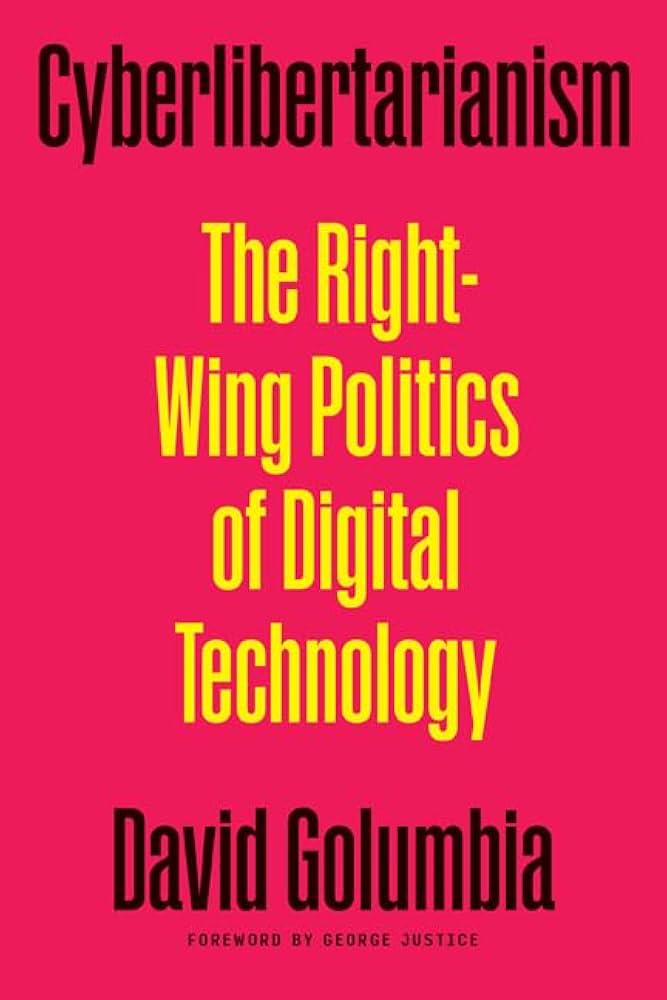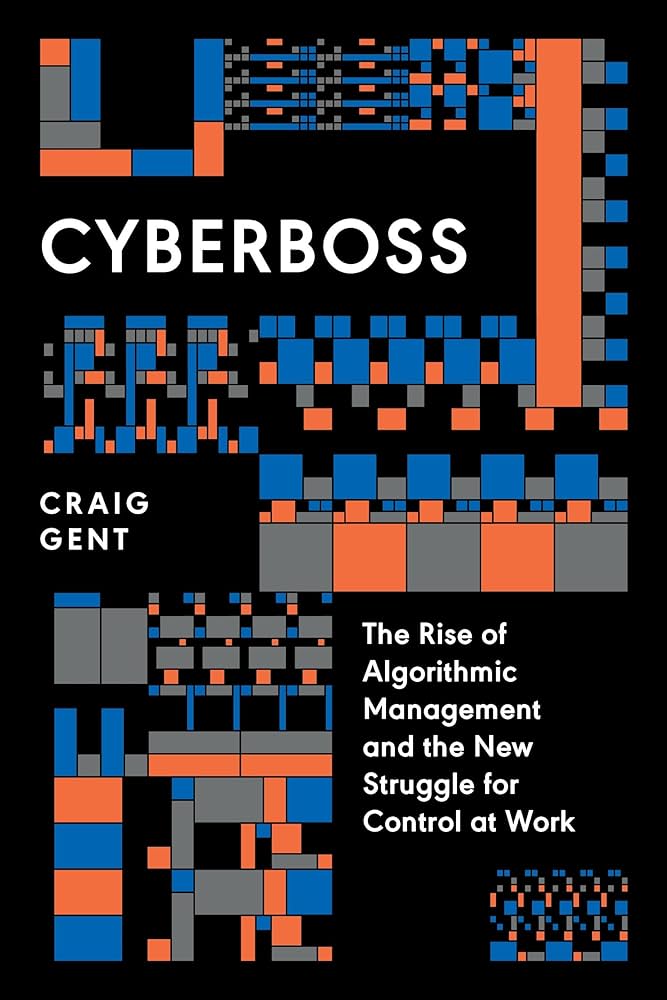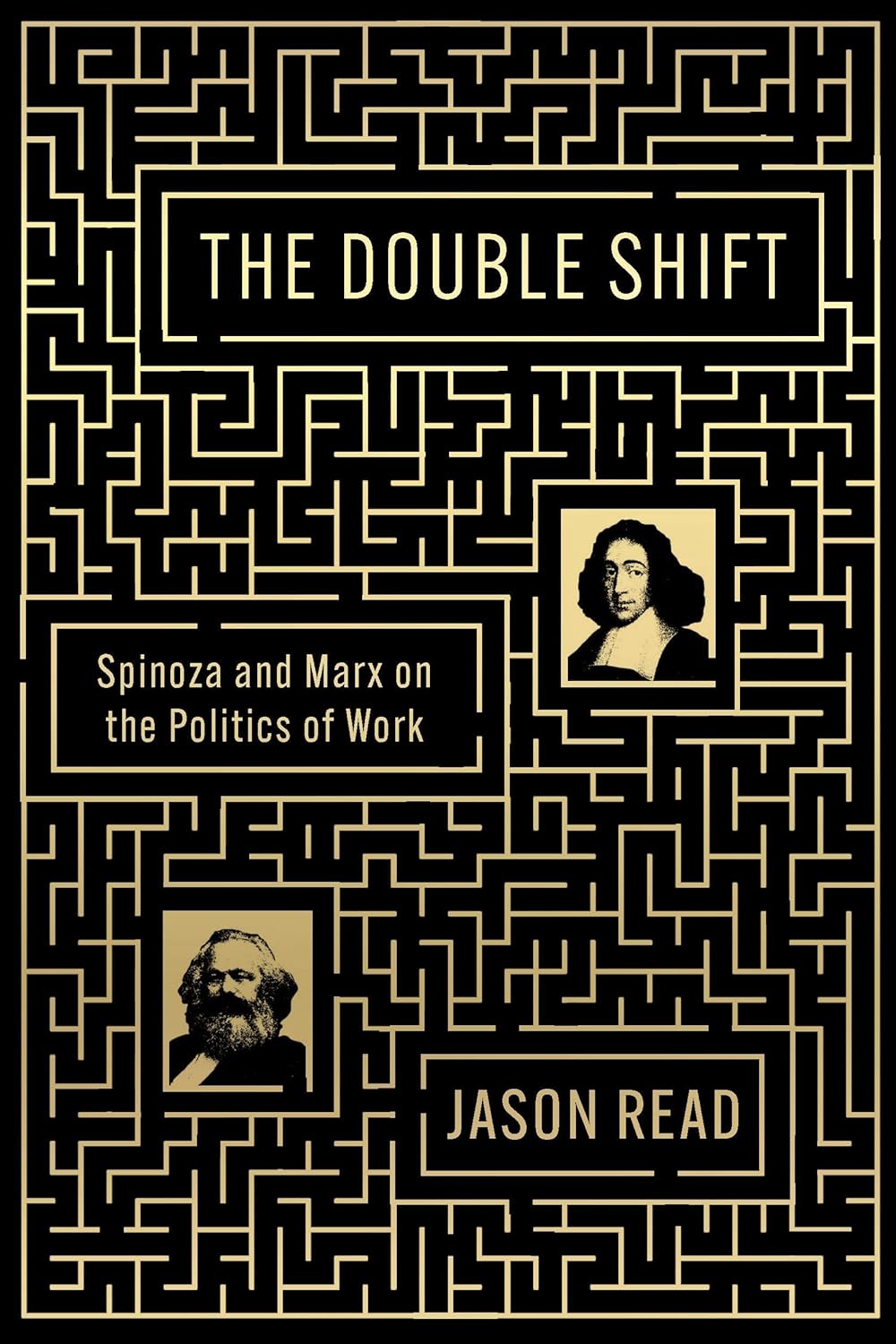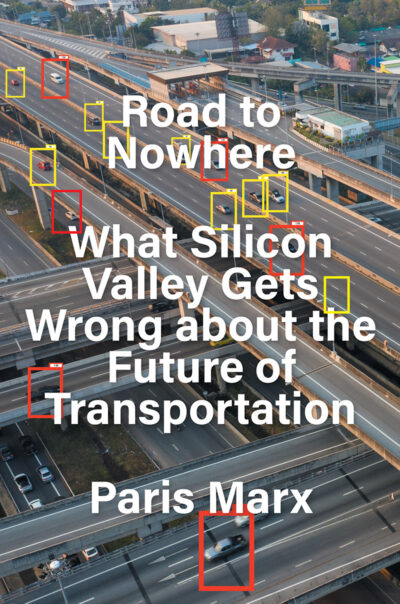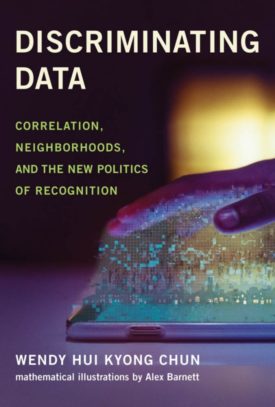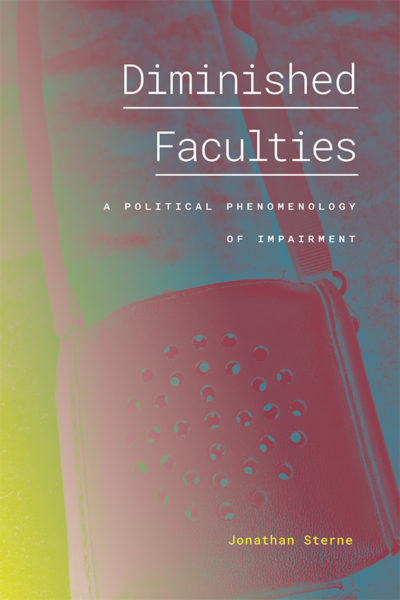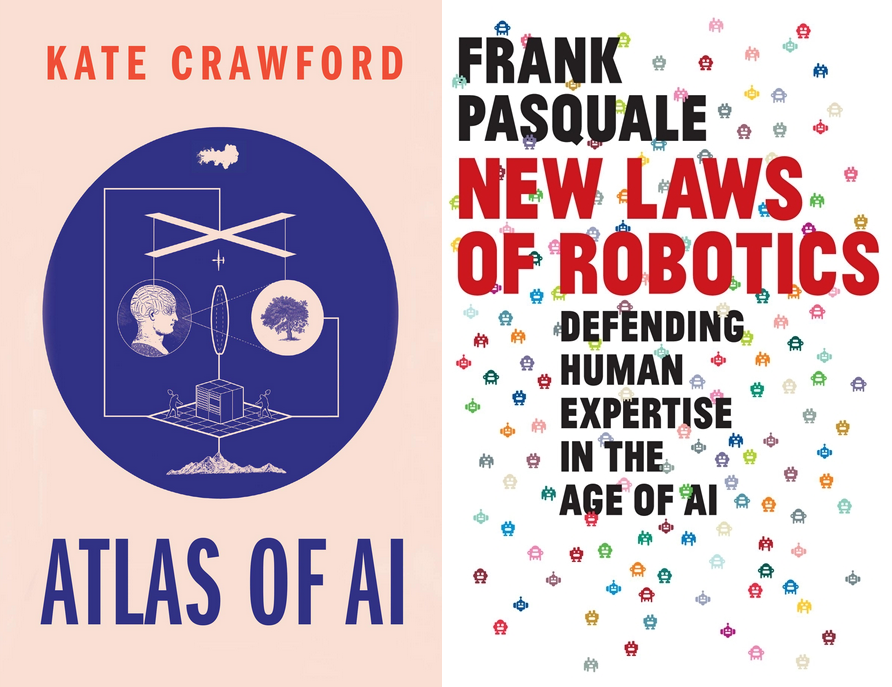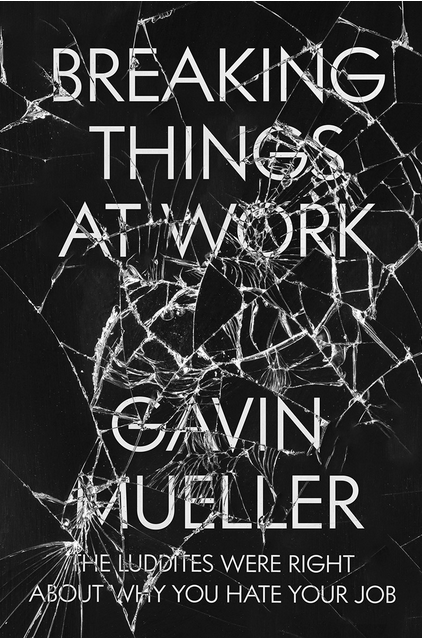The Uses of Disorder: A Review of David Golumbia’s Cyberlibertarianism
Alexander R. Galloway
Does disorder have a politics? I suspect it must. It has a history, to be sure. Disorder is quite old, in fact, primeval even, the very precondition for the primeval, evident around the world in ancient notions of chaos, strife, or cosmic confusion. But does disorder have a politics as well? As an organizing principle, disorder achieved a certain coherence during the 1990s. In those years technology evangelists penned books with titles like Out of Control (the machines are in a state of disorder, but we like it), and The Cathedral and the Bazaar (disorderly souk good, well-ordered Canterbury bad).[1] The avant argument in those years focused on a radical deregulation of all things, a kind of full-stack libertarianism in which machines and organisms could, and should, self-organize without recourse to rule or law. Far from corroding political cohesion, as it did for Thomas Hobbes and any number of other political theorists, disorder began to be understood in a more positive sense, as the essential precondition for a liberated politics. Or as the late David Golumbia writes in Cyberlibertarianism, the computer society of the twentieth and early twenty-first centuries culminated in “the view that ‘centralized authority’ and ‘bureaucracy’ are somehow emblematic of concentrated power, whereas ‘distributed’ and ‘nonhierarchical’ systems oppose that power.”[2] And, further, Golumbia argues that much of the energy for these kinds of political judgements stemmed from a characteristically ring-wing impulse, namely a conservative reaction to the specter of central planning in socialist and communist societies and the concomitant endorsement of deregulation and the neutering of state power more generally. Isaiah Berlin’s notion of negative liberty had eclipsed all other conceptions of freedom; many prominent authors and technologists seemed to agree that positive liberty was only ever a path to destruction.[3] Or as Friedrich Hayek put it already in 1944, any form of positive, conscious imposition of order would inevitably follow “the road to serfdom.”[4] Liberty would thus thrive not from rational order, but from a carefully tended form of disorder.
Ceci tuera cela, wrote Victor Hugo. “This will kill that. Books will topple buildings … printing will kill architecture.”[5] As Golumbia discusses in his Chapter 4, cyberlibertarians frequently use the analogy of Gutenberg when speculating on the revolutionary politics of new digital technologies. The Internet will transform society, cyberlibertarians argue, by doing away with all the old hierarchies and gatekeepers, much as the printing press once weakened the clergy’s monopoly over the Good News. It’s a real historical transformation, perhaps, but the phrase is also meant to work as a metaphor. This will kill that. Computers will topple buildings. And it’s even more precise than this. Computers do away with the very concept of “building,” cyberlibertarians argue, because computers are inherently disruptive of hierarchies and institutions. Computers perform a kind of un-building, a deconstruction of all hitherto existing constructions. Or as Jacques Derrida once divulged with a refreshing candor, “[i]f there had been no computer, deconstruction could never have happened.”[6] The cyberlibertarians say something similar: behold the modern computer; in its wake are dissolved all the old hierarchies of Western culture.
Should we believe all this, this specific rhetoric of disorder? I, for one, don’t. And neither did Golumbia. I don’t believe Hayek. And if I were to believe Derrida, I doubt that he himself understood the consequences of such a pronouncement.[7] However I’m compelled to stay with the logic of disorder, at least for a while, given how disorder has colored so much of contemporary life. The disorder is real, I maintain, even if one should be skeptical about the rhetoric of liberation accompanying it. By the end I hope to convince you that disorder is not the general unraveling of order, but in fact an alternative system of order, and thus a clearly articulable form of political power.
In other words, what the tech evangelists got wrong, and what Golumbia got right, was that this new chaotic infrastructure, this new anarchy of flesh and ferrite, did not signal a generalized relaxation of order and organization, but in fact constituted a new system of management just as robust as any of the old hierarchies. (Tellingly, Gilles Deleuze once labeled the burgeoning computer epoch a “society of control”, not a society of liberty or justice.[8]) Particularly formative for me in arriving at this opinion were books like Branden Hookway’s Pandemonium, an unclassifiable text from 1999 devoted to the “environment of ‘all demons,’” understood through “chaotically activated surfaces, a swirl of constant motion, even brutal ubiquitous insurrection … a sort of diabolic friction between heaven and earth.”[9] What Hookway helped me understand was that the new pandemonium of the marketplace didn’t so much forestall the new serfdom as inaugurate a new type of subordination, even if the shape of that new subordination did not resemble Winston Smith kneeling underneath the supersized face of Big Brother. The new subordination was somehow “free” and self-driving, in that all participating agents within the system (each machine, each person) were obligated to induce their own subsidiary statuses within a swirl of contingent encounters. Forget about rugged individualism, everyone seemed content just being a beta. Capitalism had entered its cuck phase. There’s a permanent pecking order, and the market bull is always ahead of you.[10]
This logic of disorder is baked into computer networks. For example, computer protocols like Transmission Control Protocol (TCP) and Internet Protocol (IP) were designed to be open, free, and flexible, not rigid or tyrannical. And indeed they are! If there is a tyranny, it’s a tyranny stemming from the absence of tyranny. Today’s protocols claim to lack any kind of central authority. Of course this is a convenient myth, as new kinds of authorities emerge precisely from an environment bent on excluding authority. Network protocols have de jure authorities in the various international standards bodies such as the IEEE (Institute of Electrical and Electronics Engineers). Networks also have de facto authorities in the small number of behemoth nodes that claim an inordinate percentage of network throughput and computing power. Look up how much of the Internet runs on Amazon Web Services alone; you might be shocked at the result. But the argument goes further than that. Even at the point of breaking up all the monopolies and structurally removing all anti-markets, the control society would remain. Even if we managed to expropriate every billionaire, and got all markets to hum with zero friction, the beautiful disorder of control society would remain. It’s all just random variations of values in an enormous planetary spreadsheet; it’s all just arbitrage within a disorderly parade. Or to borrow the language of psychoanalysis, today’s cyberlibertarians are classic hysterics. They desperately strive to undermine order, while also propping up a new technical regime (if only for the purposes of further undermining it).
Is disorder the best word to describe this? Might disorganization work better? I am trying to put my finger on a specific phenomenon that is old but has accelerated over the last several decades. I see it as characteristically American, from my vantage at least, a phenomenon that combines different tendencies from disorganization and decentralization, to anti-authoritarianism and anti-foundationalism. What ties these tendencies together is a generalized skepticism toward institutions, fueled by a fundamental belief in the power of the individual paired with a skepticism toward others, a skepticism that frequently blossoms into outright contempt. In America, and the American West in particular, these tendencies are inextricable from racism and xenophobia within the political sphere. The wars against American Indians in the Black Hills or the Chiricahua Mountains are not so remote from today’s wars on the homeless in Grants Pass or the Tenderloin. In what Richard Barbrook and Andy Cameron termed “the Californian Ideology,” technology itself might embody these same kinds of carceral exclusions, taking advantage of technologies of disorder to promulgate a structure of mutual contempt, thereby furthering an institution that undermines all institutions.[11]
One of the winners out of all of this has been Ayn Rand, a mediocre novelist who left Soviet Russia for Hollywood America, and whose name is now permanently associated with cyberlibertarianism. During a revealing segment near the start of his BBC documentary All Watched Over by Machines of Loving Grace, filmmaker Adam Curtis chronicled how Silicon Valley has paid homage to Ayn Rand time and again, from the tech entrepreneurs who have christened their daughters Ayn and their sons Rand, to the various consultancies and finance companies with names like Fountainhead or the Galt Group. The profusion of Rands is dizzying: all those CEO sprouts named Rand, Ayn Rand herself, but also the libertarian Rand Paul, mixed together with white papers published by the RAND Corporation.[12]
Curiously, the 1960s counterculture both helped and hindered these developments. Mobilizing a kind of tactical ambiguity, the counterculture both proposed any number of tech-centric utopias, while also experimenting with versions of pastoral communalism that many of the new corporate magnates inherently despised. Golumbia has resolved the ambiguity by highlighting the many rightward tendencies while remaining unconvinced of their putative leftward potential.[13] Hence in Golumbia’s account, tech institutions like the WELL and Wired Magazine, along with figures like Steward Brand and John Perry Barlow, are all harbingers of a creeping conservatism, not innervating indicators of a liberated future.
In resolving the ambiguity, Golumbia assembles a mountain of evidence. Going person by person, he shows that a sizable number of figures from the computer revolution were either proud right-wingers, or ought to be labelled as such by virtue of their affection for Atlas-Shrugged-style libertarianism. By contrast, to enumerate all of the bona fide socialists or communists among the raft of hackers and computer scientists driving cyberculture would produce a very short list indeed. Beyond individual personalities, Golumbia also shows that many of the cherished organizations within cyberculture (such as Wikipedia or the Electronic Frontier Foundation), along with many of the Internet-oriented campaigns of recent years (such as the 2012 campaign against SOPA and PIPA legislation), typically act in the service of new-economy titans in Silicon Valley at the expense of old economy dinosaurs like Hollywood. Whoever wins, we lose.
Many readers will blanch at the details; I even did in certain places, given my interest in open-source software, the hacker community, and other aspects of cyberculture targeted by Golumbia as inherently right-leaning. I fear some readers will simply discard his argument out of hand, not wishing to have their base assumptions tested, as happened with Golumbia’s previous work on the right-wing politics behind cryptocurrencies.[14] In listening to some of the lectures and podcast appearances he gave before his death, Golumbia was actively concerned about the mismatch between the evidence offered and its reception by both his supporters and critics. With patience and composure, but clearly exasperated, Golumbia would frequently note how the Internet elicits a disproportionate amount of goodwill, despite all of its negative and even reactionary tendencies. I just don’t know how much more evidence you need, Golumbia has lamented in different ways on different occasions. In fact, Golumbia was clever enough to scrutinize his own rhetorical disadvantage, ultimately adducing this disadvantage as a piece of the argument itself. According to him, cyberculture entails an inversion between evidence and belief. Hence it is entirely possible for Golumbia’s readers to accept his evidence on rational terms, while also stubbornly believing the opposite. Yes, Golumbia is correct about bitcoin, but I still want to get rich off crypto…. Yes, he’s correct about Google, but I still love my Gmail account. This mechanism of disavowal — yes, but still — allows cyberculture to appear progressive on the surface, while also promulgating reactionary politics at its core.[15] It is a classic instance of ideological inversion. The very thing that users desire is also the thing that undermines them. Or as Golumbia reminds his readers on page after page: beware of geeks bearing gifts!
Indeed, the question of gifts sits at the heart of many of these debates. Economists and legal theorists frequently talk about the advent of the so-called gift economy rooted in the wide circulation of free content online. And one of the founding principles of the open-source movement turns on a claim about gifts, or the lack thereof. Since the 1990s, computer scientist Richard Stallman has been one of the most visible figures in the free and open-source software movement. A technical genius, Stallman is notable for his ability to write compellingly about the topic, while also evangelizing through lectures and other public appearances. Perhaps the most widely quoted passage from Stallman has to do with distinguishing between two senses of the word “free.” “‘[F]ree software’ is a matter of liberty, not price,” Stallman has insisted. “To understand the concept, you should think of ‘free’ as in ‘free speech,’ not as in ‘free beer.’”[16] I recall hearing this line many times during the first Internet boom of the late 1990s. Free speech, yes; free beer no — that was the essence of liberated software according to Stallman and his ilk. It always struck me as misguided. But I guess the ebullience of those years made it feel too petty to debate the point. So at the risk of exposing myself to ridicule, let me be crystal clear today: If we are stuck with Stallman’s perhaps artificial binary, the truly progressive position would obviously be the second option, free beer! One must insist on this. Stallman was devilishly clever to constrain our choices to only these two terms, given how such a framing inherently mocks the progressive position as outrageous and frivolous, like those old conservative tabloids that would satirize the workers’ movement as wanting to make the streets flow with champagne. A sense of liberty is paramount within any healthy society. But the left has always understood freedom through the prism of justice, hence not freedom for freedom’s sake, but rather free social services, free public commons, free health care, free education, and, above all, freedom from the tyranny of private property. Or as Golumbia explains in plain terms: “The roots of open source do not emerge from Marx. Instead, they are more in line with anarcho-capitalists like Murray Rothbard and David Friedman.”[17] (I often wonder whether left tech even exists at all. Has humanity yet invented a communist computer?) To repeat, Richard Stallman made the wrong choice regarding freedom, and the success of his error has negatively influenced the history of software and computing for the last three decades. Or, to cede the thread back to Golumbia, Stallman was wrong, but, more importantly, his being wrong was evidence of his right-wing tendencies.
On this point Golumbia benefits from a certain slippage between political monikers. While many of the antagonists in his book are libertarians, in fact a good portion of them would better be described as mainline liberals, and indeed label themselves as such. The key for Golumbia is to insist on defining liberal in the traditional Lockean sense of individual liberty, private property, and market capitalism, rather than how the label tends to be used in the contemporary vernacular (as a loose synonym for NPR, Volvos, and Elizabeth Warren). Golumbia does this effectively in the book. Yet I sometimes found myself having to rehearse every step of the argument in order for the point to land. Many of Golumbia’s readers will readily agree that Elon Musk and Peter Thiel are political reactionaries; but the proposal is more labored when it comes to Cory Doctorow or danah boyd.
That Musk has described himself as an anarcho-capitalist complicates the discussion a great deal.[18] If Musk is an anarchist too, then, yuck, I will decline association. And yet, while conspiratorial thinking is no doubt enjoyable, particularly when it means putting capitalism in the sights, there’s no anarchist conspiracy taking place in corporate boardrooms, alas. The “anarcho” in anarcho-capitalism is a misnomer of the highest order; Musk & Co. are not anarchists in any real sense of the term. As Golumbia explains with more patience than I could ever muster, anarcho-capitalists do not adopt any of the various principles of political anarchism such as radical equality via the removal of social hierarchy, a rejection of representation in favor of local decision making and communization, Peter Kropotkin’s mutual aid contra Charles Darwin’s survival of the fittest. (Enumerating the principles of anarchism is absurd of course, at least superficially; those made nervous by the listing of principles might prefer to think in terms of tendencies or practices, identified merely to facilitate the very contingency of anarchism, its essential disorder.) And yet so many tech entrepreneurs want to fly the black flag. Do these titans of industry know more than they let on? Do they admit to themselves that capitalism is a corrosive force in society? Is “anarchism” just a sexier word for “disruption” (which itself was a sexy word for all the daily depravities of capitalism)? I already know Marx and Engels’s lamentations on the disruptive forces of bourgeois society, “[a]ll that is solid melts into air, all that is holy is profaned,” and yet I have to hear it again from a bunch of cheery entrepreneurs?[19]
Here’s a guiding principle to help stay mentally balanced: less Tim May and more Todd May. I screw up the names myself sometimes. Todd, the leftist philosopher who first made his mark thirty years ago with a lean and punchy book about political anarchism[20]; Tim, the cypherpunk engineer and low-skill author of the “Crypto Anarchist Manifesto” about techno anarchism. (“A specter is haunting the modern world, the specter of crypto anarchy. … Arise, you have nothing to lose but your barbed wire fences!”[21]) Is it even worth complaining about Tim’s amateurish allusions when the ideas driving them are so repulsive? As Golumbia diligently documents in his book, Tim was virulently bigoted against Blacks, Jews, and Latinos. Golumbia reproduces some of the offending passages in his book — I won’t cite them myself; the quotations are not worth your eyes — but Golumbia’s true task was to show readers exactly why Tim’s bigotry paired so easily with his libertarianism.
I suspect that the fatal flaw of cyberlibertarianism has been to value formal determinations over political ones. By formal determinations I mean the adoption of tools and techniques selected for their specific shape and arrangement rather than due to the political realities they engender. Hence the cyberlibertarian values of openness over closedness, distribution contra centralization, the horizontal instead of the vertical, flows rather than fetters, and rhizomes not trees. Yet the disparaged second terms in this list of pairs are often politically valuable, even necessary. For example, closedness is necessary for privacy, and centralization helps with economies of scale.
Here we may also definitively untangle the unfortunately intimate relationship forged between libertarianism and anarchism in recent decades. Anarchists want a different shape, that’s true, but a shape that directly informs a series of political desires such as mutual aid, anti-racism, collapsing the hierarchy of representation, and so on. Whereas libertarians use a superficial form of anarchism as camouflage to hide what amounts to cynical egoism: I’m an anti-foundationalist because I just don’t want to pay taxes.[22]
What gets overlooked by cyberlibertarians, and frankly by many others including some proper anarchists, is that these arrangements (horizontality, openness, free flows) constitute a system of order like any other. Fickle and free liquidity furnishes no exemption from organization. My dear anarchist comrades—at least some of them–ought to be admonished on this point and this point alone, namely for continuing to believe that anti-foundationalism doesn’t entail its own autonomous form of power and organization. In the end, anarchism is not so much the absence of government or the annihilation of a foundation — arkhe plus the alpha privative — as it is the adoption of a specific set of formal and political virtues (virtues which just so happen to resist established domination and undermine centralized authority). This is part of why disorder has a politics, precisely because it has no inherent political valence, and thus can and should become a site of struggle.
If Golumbia overlooked anything in this long and thorough book it was no doubt the domain of artificial intelligence. I imagine he omitted any serious discussion of AI due to practical concerns; it’s a massive topic and would have compounded the book’s scope and length significantly. Yet AI fits the book’s primary thesis. Current generation AI is inherently cyberlibertarian because it requires enormous stockpiles of putatively free data, unfettered by regulations around copyright or restrictions over ownership. The fair use doctrine has been mobilized as a new form of corporate theft of common resources, so that “free speech” will now alchemically transform into a glass of “free beer,” but only for those culling the data and gulping its value. Marx wrote about “primitive accumulation” at the end of Capital, vol. 1; AI is just the latest wave of this type of accumulation by dispossession.[23] (In fact the theft of value from unpaid micro labor is only the most egregious violation in a long list that should also include the squandering of vast amounts of energy and natural resources. If the overdeveloped nations of the world weren’t hastening climate catastrophe fast enough, we’ve also invented robots to burn additional fossil fuels on our behalf. Suicide by proxy.)
Here too we see a new order forged from disorder. I mean that very literally. Certain types of AI, diffusion models in particular, explicitly use randomness and other entropic phenomena during the process of image generation. Discrete rationality is sterile and deterministic, alas; it may only transcend itself via excursions into more fertile lands, what information scientists call latent space and what Deleuze called the virtual. Computers have long served as a special tool to leverage the distinction between the orderly and the disorderly, to form a bridge between these two domains. And the richest source of disorder is us, the users.
Hannes Bajohr has brilliantly described AI image generation in terms of an “operative ekphrasis,” that is, the use of textual description to summon an image into existence, as Homer did with the shield of Achilles.[24] Everything inside a computer is text, after all, or at least a series of alphanumeric tokens (represented primarily as integers and ultimately as discrete changes in electrical voltage). There are no images inside the beige box, even when it outputs a synthetic picture. And yet the machine accepts commands (i.e. textual prompts) that actualize a single image from out of the near infinity of possible alternatives.
Disorder in technical systems was first defined by one Ludwig Boltzmann. However, “no Boltzmann without Shannon,” as Friedrich Kittler once insisted.[25] The historical causality appears to be reversed. But is it? I imagine Kittler to have meant that the existence of Ludwig Boltzmann in 1877 lead naturally to the existence of Claude Shannon in 1948. And this is no doubt true. The mathematical definition of entropy found in Boltzmann was directly deployed, mimicked even, by Shannon in his definition of information.[26] In other words, disorder has a history, and it has a politics, but it also has a technology. And this disorder technology, this entropy technology, has been central to cyberlibertarianism from the outset. Encryption technology, the killer app of cyberlibertarianism, is simply unthinkable without technologies of disorder, specifically the ability to fabricate high-quality random numbers and the (practical) inability to calculate the factors of large integers. So AI synchronizes with Golumbia’s theme due to the rhetorics of liberation surrounding the extraction of value. But also through the more proximate connection of AI diffusion models that map between low entropy images and high entropy images.
This is what I will retain most from Golumbia’s final work, that while the bobbles and trinkets invented by cyberlibertarians in Silicon Valley, Bangalore, or Shenzhen are touted for their ability to disorder the order of things, such disorder is ultimately a distraction. So here at the exit, let’s exit the concept entirely. Instead I prefer to insist that the apparent disorder at the heart of cyberlibertarianism, along with the apparent anarchy at the heart of anarcho-capitalism, are merely new forms of order. And this new order is also a clearly articulable form of power.
Alexander R. Galloway is a writer and computer programmer working on issues in philosophy, technology, and theories of mediation.
[1] See Kevin Kelly, Out of Control: The New Biology of Machines, Social Systems and the Economic World (New York: Basic Books, 1994) and Eric S. Raymond, The Cathedral and the Bazaar: Musings on Linux and Open Source by an Accidental Revolutionary (Sebastopol, CA: O’Reilly Media, 1999). Interestingly, “cathedral,” as a proper name for the structure of power, has also been mobilized by neo-reactionary authors like Curtis Yarvin.
[2] David Golumbia, Cyberlibertarianism: The Right-Wing Politics of Digital Technology (Minneapolis: University of Minnesota Press, 2024), 62. Golumbia credits Langdon Winner for coining the term cyberlibertarianism in his essay “Cyberlibertarian Myths and the Prospects for Community,” ACM SIGCAS Computers and Society 27, no. 3 (September, 1997): 14-19.
[3] On negative liberty (the removal of freedom’s fetters) and positive liberty (the assertion of free conditions), see Berlin’s 1958 lecture “Two Concepts of Liberty” in Isaiah Berlin, Liberty (London: Oxford University Press, 2002), 166-217.
[4] Friedrich Hayek, The Road to Serfdom (Chicago: University of Chicago Press, 1944).
[5] Victor Hugo, Notre-Dame de Paris (Paris: Gallimard, 1973), 244-245.
[6] As Friedrich Kittler reported in an interview: “I was very pleased that Jacques Derrida, during a recent visit to the university in Siegen, actually uttered the sentence (after some questioning): ‘If there had been no computer, deconstruction could never have happened.’” See Friedrich Kittler, “Spooky Electricity: Laurence Rickels Talks with Friedrich Kittler,” Artforum 31, no. 4 (December 1992): 67-70, p. 68.
[7] Despite being a devoted user of Macintosh computers, Derrida had no real intellectual engagement with computation during this lifetime. Some notable exceptions exist including Béatrice and Louis Seguin’s interview with Derrida, first published in La Quinzaine Littéraire (August 1996) and later included as chapter three, “The Word Processor,” in Jacques Derrida, Paper Machine, trans. Rachel Bowlby (Stanford: Stanford University Press, 2005), 19-32. I engage the relationship between Derrida and computing at greater length in a forthcoming essay titled “What are the Media that Determine Philosophy?”
[8] See Gilles Deleuze, “Postscript on Control Societies” in Negotiations, Martin Joughin, trans. (New York: Columbia University Press, 1990), 177-182.
[9] Branden Hookway, Pandemonium: The Rise of Predatory Locales in the Postwar World (New York: Princeton Architectural Press, 1999), 23. Like Golumbia, Hookway also passed away far too young.
[10] The urge to rank users into a specific set of hierarchical tiers based on captured data is expertly investigated in two recent works of social science: Marion Fourcade and Kieran Healy, The Ordinal Society (Cambridge: Harvard University Press, 2024); and Cédric Durand, How Silicon Valley Unleashed Techno-feudalism: The Making of the Digital Economy, trans. David Broder (London: Verso, 2024).
[11] For more on what he calls carceral systems, by way of Anthony Wilden’s important early text on digital theory, System and Structure, see Seb Franklin’s essay “The Pattern and the Police: Carceral Systems and Structures” in Parapraxis 4 (August, 2024): 109-128.
[12] Based in Santa Monica, California, the RAND Corporation was in fact not named after Ayn Rand, but rather as an acronym of “research and development.”
[13] Golumbia’s own leftist politics hinged on “the political, the social, and the human,” as he puts it in the book’s epilogue (Cyberlibertarianism, 401). Buy this he means fostering a robust democratic state, supported by strong public institutions and an educated citizenry. Golumbia was anti-fascist because fascism threatens that Whiggish ideal; he was anti-capitalist for the same reason.
[14] David Golumbia, The Politics of Bitcoin: Software as Right-Wing Extremism (Minneapolis: University of Minnesota Press, 2016).
[15] For more on disavowal as a psychic mechanism see Alenka Zupančič, Disavowal (Cambridge: Polity, 2024). The inverse relation between evidence and belief has also been a part of Slavoj Žižek’s intellectual project for many years. See, inter alia, Slavoj Žižek, The Sublime Object of Ideology (London: Verso, 2009).
[16] Richard M. Stallman, Free Software, Free Society: Selected Essays of Richard M. Stallman (Boston: GNU Press, 2002), 43.
[17] Golumbia, Cyberlibertarianism, 24.
[18] The world’s most visible suck-up, Musk called himself a “utopian anarchist” in a tweet from June 16, 2018, while more recently favoring the descriptors “dark, gothic MAGA” at a Donald Trump rally held on October 27, 2024 at Madison Square Garden. Musk may be MAGA, but, dear reader, he is most certainly not dark, gothic, utopian, or anarchist.
[19] Karl Marx and Friedrich Engels, The Communist Manifesto, trans. Samuel Moore (London: Penguin, 2002), 223.
[20] Todd May, The Political Philosophy of Poststructuralist Anarchism (University Park: Pennsylvania State University Press, 2021). May’s argument remains relevant for a number of reasons. I will merely highlight one central feature of the book, how May explicitly characterized French poststructuralism as anarchist. As he put it unambiguously in the final sentence of the book, anarchism is the “most lasting … legacy of poststructuralist political thought” (155). Some will quibble over the deals, and a lot depends on how one defines the boundary of French poststructuralism; May’s references are predominantly Michel Foucault, Gilles Deleuze, and Jean-François Lyotard. But there’s no doubt in my mind that French theory, broadly conceived, illustrates the general migration, evident within leftist intellectual circles overall during the last fifty years, away from Leninism and toward anarchism, away from the red and toward the black. In a recent work, Catherine Malabou has also traced the peculiar relationship between philosophy and anarchism, with reference to both France (Emmanuel Levinas, Jacques Derrida, Michel Foucault, and Jacques Rancière) and elsewhere (Aristotle, Reiner Schürmann, and Giorgio Agamben). See Catherine Malabou, Stop Thief!: Anarchism and Philosophy, trans. Carolyn Shread (Cambridge: Polity, 2023), along with an even more recent book on the question of property in the work of anarchist Pierre-Joseph Proudhon, Il n’y a pas eu de Révolution: Réflexions sur la propriété privée, le pouvoir et la condition servile en France (Paris: Rivages, 2024). Golumbia was disappointed by Malabou’s June 14, 2018 statement in Le Monde titled “Cryptomonnaie, stade anarchiste du capitalisme” [“Cryptocurrency–The Anarchist Stage of Capitalism”], where she explained her interest in cryptocurrencies, and specifically her rationale for endorsing John McAfee’s “Declaration of Currency Independence,” a cyberlibertarian document. In fact a number of prominent leftist theorists have expressed an interest in crypto. See, for instance, Brian Massumi, who in his book 99 Theses on the Revaluation of Value: A Postcapitalist Manifesto (Minneapolis: University of Minnesota Press, 2018) proposed a “maximally non-compromising, postblockchain speculative alter-economy” (20).
[21] These being the first and last lines of Tim May’s “Crypto Anarchist Manifesto” from 1992 (https://groups.csail.mit.edu/mac/classes/6.805/articles/crypto/cypherpunks/may-crypto-manifesto.html). A whole study could be done on how engineers and entrepreneurs have adopted the literary genre of the political tract, while almost completely inverting the political impulses of the old avant-garde manifestos or revolutionary cahiers de doléances. Another such representative, also discussed by Golumbia, is the “Magna Carta for the Knowledge Age” co-authored by Esther Dyson, George Gilder, George Keyworth, and Alvin Toffler. This new Great Charter of Liberty opened by asserting that “[t]he powers of mind are everywhere ascendant over the brute force of things,” before lapsing into a fairly predictable form of pro-market libertarianism. See Esther Dyson, et al., “Cyberspace and the American Dream: A Magna Carta for the Knowledge Age” (http://www.pff.org/issues-pubs/futureinsights/fi1.2magnacarta.html).
[22] Which prompts the necessary inversion: I’m an anarchist, and I do want to pay taxes. In other words, the best kinds of anti-foundationalism revolve around an invigorated sense of responsibility and commitment, not the general dissolving of social bonds. See, for instance, Kristin Ross, The Commune Form: The Transformation of Everyday Life (London: Verso, 2024).
[23] In the first new English translation in fifty years, Paul Reitter has opted instead for the phrase “original accumulation,” arguing that it is closer to the original German while also avoiding unnecessary connotations suggested by the word “primitive.” See Karl Marx, Capital: Critique of Political Economy, vol. 1, trans. Paul Reitter (Princeton: Princeton University Press, 2024), 650 and note i on 836-838.
[24] See Hannes Bajohr, “Operative Ekphrasis: The Collapse of the Text/Image Distinction in Multimodal AI,” Word and Image 40, no. 2 (2024): 77-90. According to Antonio Somaini, this kind of operative ekphrasis “does not describe pre-existing images but rather generates images by pre-describing them” (Antonio Somaini, “A Questionnaire on Art and Machine Learning,” October 189 [Summer 2024]: 112-120, p. 115).
[25] Friedrich Kittler, The Truth of the Technological World: Essays on the Genealogy of Presence, trans. Erik Butler (Stanford: Stanford University Press, 2013), 183.
[26] Indeed Kittler was less ambiguous elsewhere: “[Boltzmann’s] entropy formula is mathematically identical to Shannon’s later information formula” (see Friedrich Kittler, Optical Media: Berlin Lectures 1999, trans. Anthony Enns [Cambridge: Polity, 2010], 125). Although “mathematically identical” is imprecise even if Kittler’s sentiment was correct overall: Shannon’s formulation omits the Boltzmann constant, it uses log base two rather than the natural log (in base e), and it entails a summation of probabilities.
